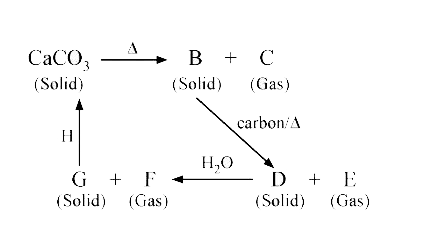Correct statement about non competitive inhibitor
Structurally similar to substrate
Changes structure of enzymes
Binds to active site
Promote catalysis after binding to enzyme
The correct Answer is:B
Step-by-Step Solution:
1. Understanding Non-Competitive Inhibitors:
Non-competitive inhibitors are a type of enzyme inhibitor that bind to an enzyme at a site other than the active site. This binding does not prevent the substrate from binding to the active site, but it does inhibit the enzyme's activity.
2. Analyzing the Options:
We need to evaluate each of the provided options to determine which statement is correct regarding non-competitive inhibitors.
- Option 1: "Structurally similar to substrate" - This is incorrect. Non-competitive inhibitors do not have to be structurally similar to the substrate.
- Option 2: "Changes structure of the enzymes" - This is correct. Non-competitive inhibitors bind to an allosteric site and induce a conformational change in the enzyme, altering its structure.
- Option 3: "Binds to the active site" - This is incorrect. Non-competitive inhibitors do not bind to the active site; they bind to a different site on the enzyme.
- Option 4: "Promotes catalysis after binding to the enzyme" - This is incorrect. Non-competitive inhibitors inhibit the enzyme's activity rather than promoting catalysis.
3. Conclusion:
After analyzing the options, the correct statement about non-competitive inhibitors is: "Changes structure of the enzymes" (Option 2). This is because non-competitive inhibitors bind to an allosteric site, causing a conformational change that affects the enzyme's function.
Non-competitive inhibitors are a type of enzyme inhibitor that bind to an enzyme at a site other than the active site. This binding does not prevent the substrate from binding to the active site, but it does inhibit the enzyme's activity.
We need to evaluate each of the provided options to determine which statement is correct regarding non-competitive inhibitors.
- Option 2: "Changes structure of the enzymes" - This is correct. Non-competitive inhibitors bind to an allosteric site and induce a conformational change in the enzyme, altering its structure.
- Option 3: "Binds to the active site" - This is incorrect. Non-competitive inhibitors do not bind to the active site; they bind to a different site on the enzyme.
- Option 4: "Promotes catalysis after binding to the enzyme" - This is incorrect. Non-competitive inhibitors inhibit the enzyme's activity rather than promoting catalysis.
After analyzing the options, the correct statement about non-competitive inhibitors is: "Changes structure of the enzymes" (Option 2). This is because non-competitive inhibitors bind to an allosteric site, causing a conformational change that affects the enzyme's function.
Topper's Solved these Questions
- BIOMOLECULESBOOK - AAKASH SERIESCHAPTER - BIOMOLECULESEXERCISE - EXERCISE - I (Enzymes Inhibition)
10 Videos
- BIOMOLECULESBOOK - AAKASH SERIESCHAPTER - BIOMOLECULESEXERCISE - EXERCISE - I (Classification and Nomenclature of Enzymes)
24 Videos
- BIOMOLECULESBOOK - AAKASH SERIESCHAPTER - BIOMOLECULESEXERCISE - EXERCISE - I (Properties & Nature of enzyme Action)
11 Videos
- BIOLOGICAL CLASSIFICATIONBOOK - AAKASH SERIESCHAPTER - BIOLOGICAL CLASSIFICATIONEXERCISE - EXERCISE-III (Previous AIPMT/NEET Question)
37 Videos
- CELL CYCLE AND CELL DIVISIONBOOK - AAKASH SERIESCHAPTER - CELL CYCLE AND CELL DIVISIONEXERCISE - Exercise-III
18 Videos
Similar Questions
Knowledge Check

Correct statement about above reaction is:AA =cis-2-chlorocyclohexanol,BA = trans-2-chloro cyclohexanol,CA = trans-2-chlorocyclohexanol,DA = cis-2-chlorocyclohexanol,
Which of the following statement is correct about competitive inhibitors?
View SolutionStatins are competitive inhibitors of
View Solution
The correct statement about F is
View SolutionStains are competitive inhibitor of
View SolutionIncorrect statement about non-specific immunity
View SolutionCorrect statement about dipole moment is :-
View SolutionMalonate is a competitive inhibitor of
View Solution
